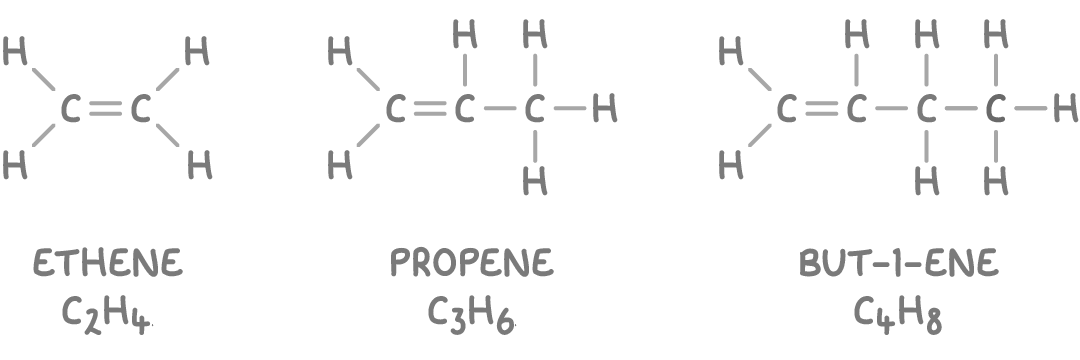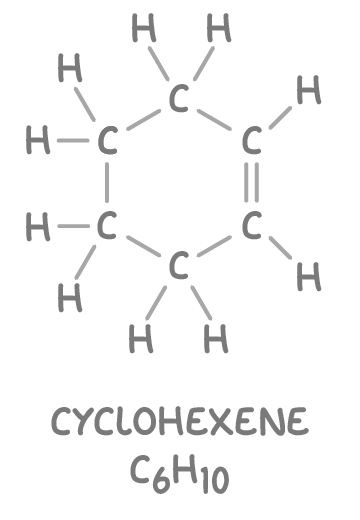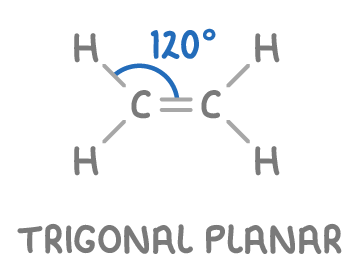Alkenes
This lesson covers:
- The general formula and bonding of alkenes
- The trigonal planar geometry of alkenes
- Why alkenes are more reactive than alkanes
Alkenes have the general formula CnH2n
Alkenes are a class of hydrocarbons containing carbon-carbon double bonds. Their general formula is CnH2n, where n represents the number of carbon atoms.
Key features of alkenes:
- They consist of carbon and hydrogen atoms (hydrocarbons)
- Each alkene molecule contains at least one carbon-carbon double bond
- The double bond makes them "unsaturated", enabling them to participate in addition reactions.
Examples of alkenes:

Note that cyclic alkenes such as cyclohexene (C6H10) have two fewer hydrogen atoms compared to acyclic alkenes with an equivalent number of carbon atoms.

Trigonal planar geometry of carbon in alkenes
In alkenes, each carbon atom within the C=C double bond has:
- Three regions of electron density.
- These regions are arranged in a trigonal planar shape due to equal repulsion between them.
- The bond angles around the carbon atoms are approximately 120°.

An example of this geometry is seen in ethene (C2H4), where each carbon in the double bond displays trigonal planar geometry.
Alkenes are more reactive than alkanes due to their double bond
Alkanes contain only strong single bonds between carbon atoms, which contribute to their low reactivity. In contrast, alkenes contain a double bond (C=C), which makes them more reactive.
The high electron density of the C=C double bond makes the electrons highly accessible for reactions and allows alkenes to readily attract electrophiles.
This structural feature of the double bond gives alkenes greater reactivity compared to alkanes, enabling them to undergo addition reactions across the C=C double bond.